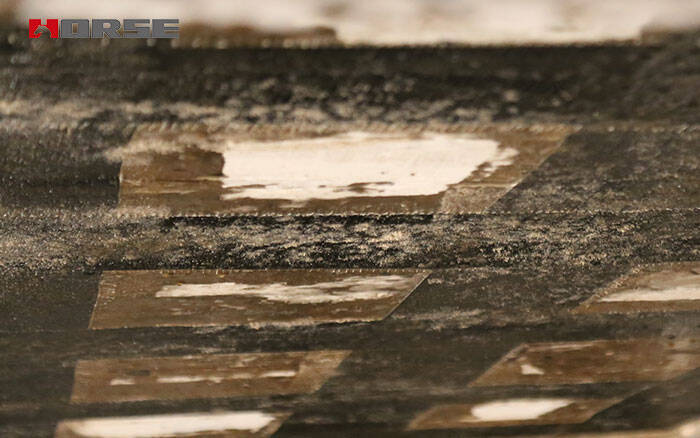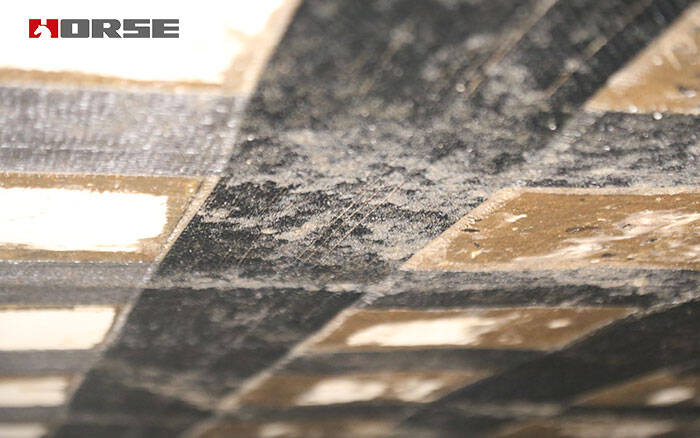Carbon fiber fabric retrofit
Carbon fiber reinforcement (CFRP) is considered to be the most promising structural reinforcement method because of its outstanding material mechanical properties and high efficiency.
Corroded concrete structure protection and reinforcement technology has attracted worldwide attention, and carbon fiber fabric retrofitting technology is one of the effective ways to solve this problem.

The corrosion damage of reinforced concrete structures caused by salts is serious. People even compare the serious excess of chloride ion content in reinforced concrete components to the "cancer" of concrete. According to the U. S. Bureau of Standards statistics, corrosion caused by steel corrosion of the building structure to reduce the bearing capacity, reinforced concrete members lost the basic bearing capacity caused by the loss of up to 28 billion U. S. dollars. Due to the seawater environment, the corrosion of reinforced concrete structures in the seaside area is more than 70%. Therefore, corrosion of steel bars, expansion cracking, spalling and spalling of concrete along steel bars in reinforced concrete structures have become the main hazards threatening the durability of reinforced concrete structures, and the huge economic losses caused by them have become the focus of civil engineering circles.
Corroded concrete structure protection and reinforcement technology has attracted worldwide attention, and carbon fiber fabric reinforcement technology is one of the effective ways to solve this problem.
1 Engineering example analysis
1.1 Engineering background
The project is a residential area in Jingtang Port. It is a coastal port city residence with 7 brick and concrete structures. Founded in 2005, it has not been built for some reason. The main body was completed and not decorated inside and outside. In 2012, it was bought by a development company and was ready to continue construction.
1.2 detection and analysis
The residential building of the residential area has been suspended for 7 years, resulting in many engineering problems. Through visual observation, the residential floor slab bottom rust spots can be seen everywhere, serious empty, most of the protective layer spalling, along the direction of steel cracks. Beams and plates cause cracks due to corrosion and expansion of steel bars. The component concrete is seriously carbonized, the concrete is loose, and the steel corrosion is serious. Most of the steel bars on the bottom of the slab are exposed, and the stress section of the reinforcement is weakened, which endangers the safety of the structure. According to the design drawings and analysis of the corrosion of concrete and steel bars on site, and through the inspection of the relevant quality inspection departments, it is considered that the project needs to be strengthened before it can continue construction.
1.3 failure analysis
Through collecting many concrete samples and core samples, through mechanical and chemical analysis and field investigation, the following conclusions are drawn: steel corrosion is the main cause of concrete cover cracking. On the one hand, corrosion is caused by chloride ion intrusion in the atmospheric environment and marine environment. On the other hand, the thickness of concrete cover is not enough, some components even have no protective layer.
Field investigation and testing results:
the strength of concrete can basically meet the design requirements.
concrete longitudinal cracks are longitudinally connected.
the concrete surface is seriously spalling.
the corrosion of steel bar is very serious, and the damage of reinforcement section has reached 50%.

2 Reinforcement scheme, construction and quality control
2.1 The selection of reinforcement schemes can be divided into six categories: 1) enlarging cross-section method; 2) enclosing steel reinforcement method; 3) bonding steel method; 4) prestressing reinforcement method; 5) changing the way of force transmission; 6) carbon fiber reinforcement method.
Practice has proved that carbon fiber reinforcement method has the advantages of high strength, high modulus, corrosion resistance, fatigue resistance, easy processing, light weight, easy manual operation and so on. Carbon fiber reinforcement (CFRP) is considered to be the most promising structural reinforcement method because of its outstanding material mechanical properties and high efficiency.
2.2 design principle and calculation of CFRP reinforcement
In order to improve the bearing capacity, longitudinal CFRP sheet should be calculated according to the corrosion degree of steel bars in order to reduce the cross-sectional area of steel bars, the strength of steel bars and the loss of cohesive force between steel bars and concrete.

3. Externally bonded carbon fiber fabric on concrete structure
3.1 rust removing of steel bar
(1) remove the deteriorated concrete such as spalling, loose and honeycomb corrosion.
(2)remove the corroded steel bar concrete and expose the reinforcement.
(3) remove the rust layer on the surface of steel bar by wire brush and angle grinder.
(4) wipe the surface of the steel bar with acetone or anhydrous alcohol to expose the steel bar.
3.2 base surface treatment,
(1)flattening the surface of the component surface, exposing sand, stone and cement.
(2)part of the cracks are repaired with repair materials.
(3)remove the surface dust by compressed air and wipe the surface with acetone.
3.3 brush the base glue evenly with the roller or brush to coat the surface of the concrete. It is required to be soaked in the concrete pore, and then proceed to the next process after the glue is solidified.
3.4 leveling treatment
(1)the concave part of concrete surface is filled with leveling material.
(2)apply the leveling material at the corner to repair a smooth arc with a radius of not less than 20mm.
(3)after leveling material is dried, proceed to the next working procedure.
3.5 sticking carbon fiber cloth
(1)ccording to the size of design requirements, carbon fiber cloth is cut.
(2)prepare dipping resin adhesive and apply evenly to the paste part.
(3) paste carbon fiber cloth, roll along the fiber direction for many times with the roller, extrude the bubble, so that resin glue fully immersed in carbon fiber cloth.
(4) evenly spread a layer of glue on the surface of carbon fiber cloth.
(5)note that the overlap length of CFRP is not less than 100 mm, the end is fixed with transverse CFRP, and the warping part is repaired with syringe.
3.6. In order to ensure the durability, fire resistance and other properties of the adhesive, mortar or fire retardant coating can be applied on the surface for protection. In order to meet the next process (house decoration) considerations, this project adopted the bottom of the board with cement mortar wool treatment to increase the surface adhesion.
4 Conclusion
The harmfulness of corrosion of steel bars caused by salt corrosion to houses is an important issue worthy of attention of engineers. It is particularly important to strengthen construction quality management, strictly control material quality and take corresponding measures in view of special environment. From the reinforcement and repair effect of the project involved in this paper, the reinforcement treatment technology is feasible and the effect is good. After reinforcement treatment, it has passed the acceptance of the relevant quality inspection department. It has been used for more than one year without any abnormality. Carbon fiber reinforced concrete (CFRP) has excellent technical and economic performance, which will inevitably make it occupy an important position in the field of building reinforcement, and has a good development space and prospects.